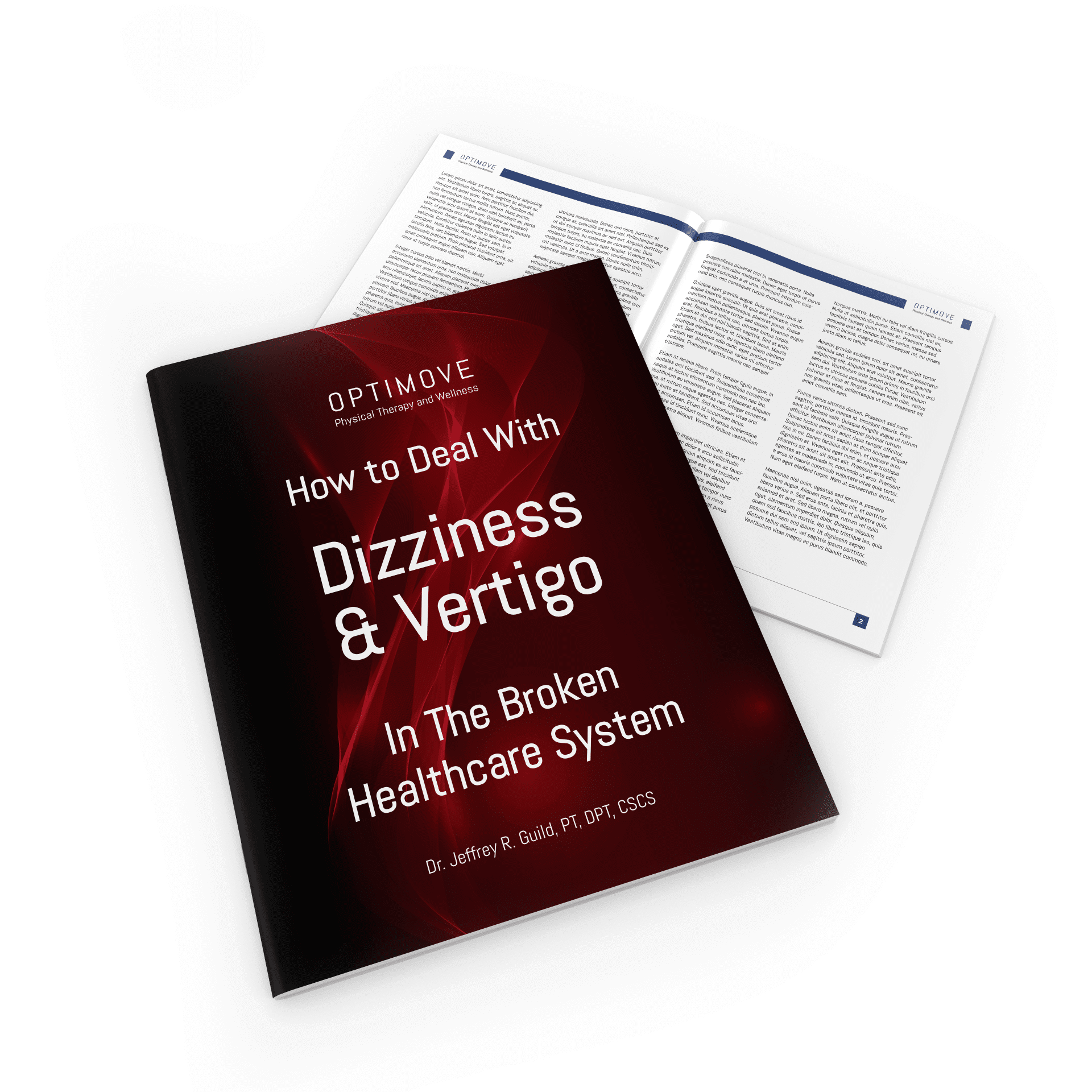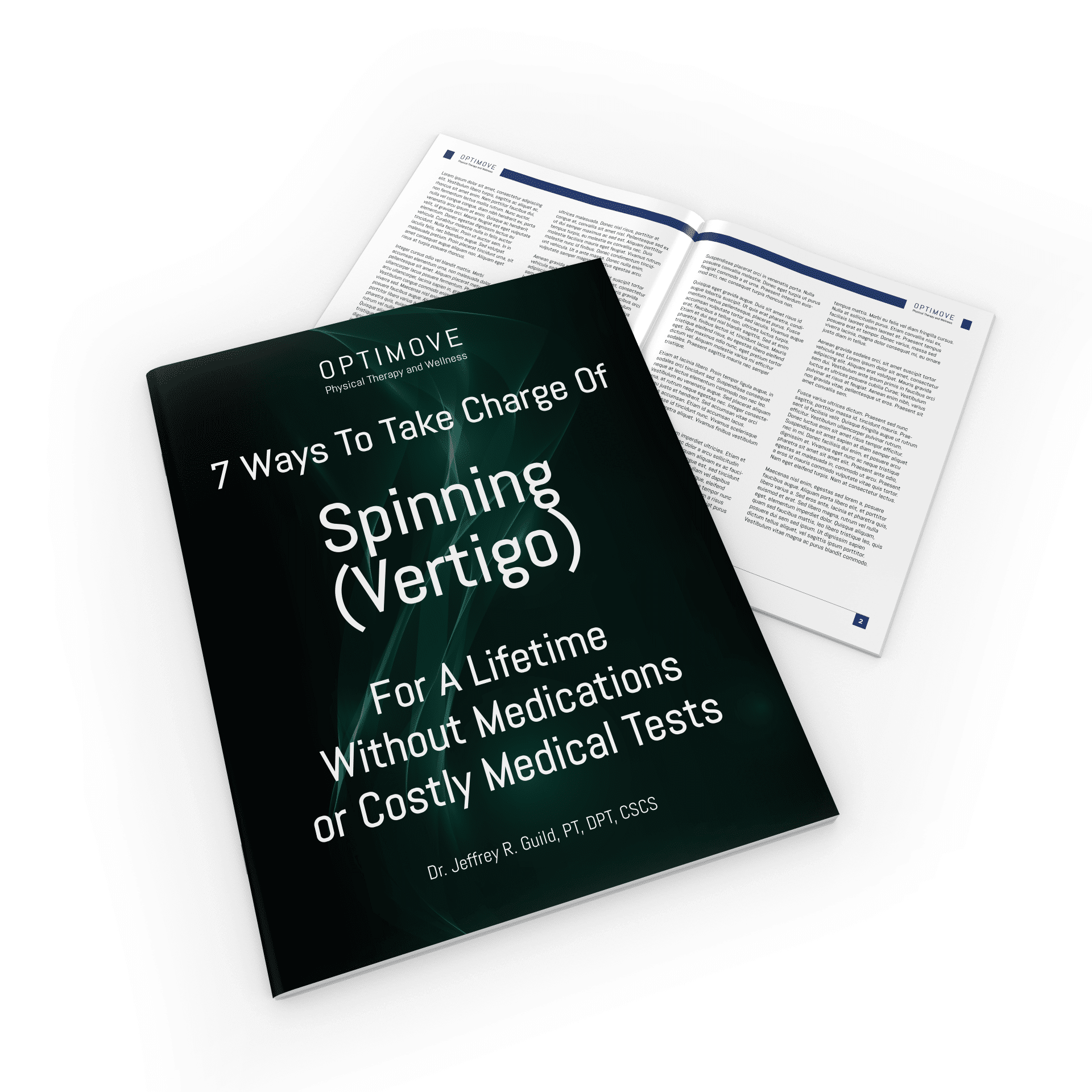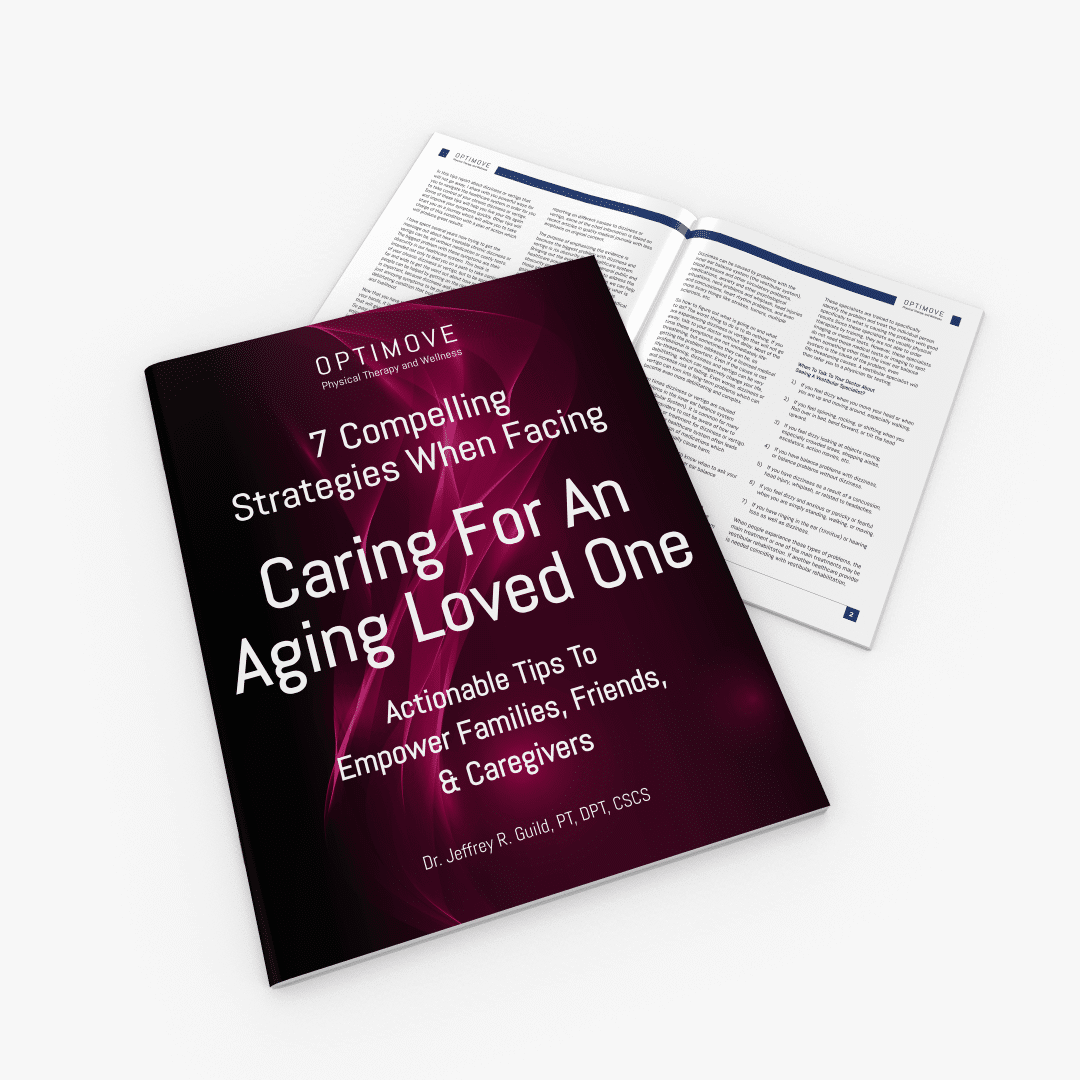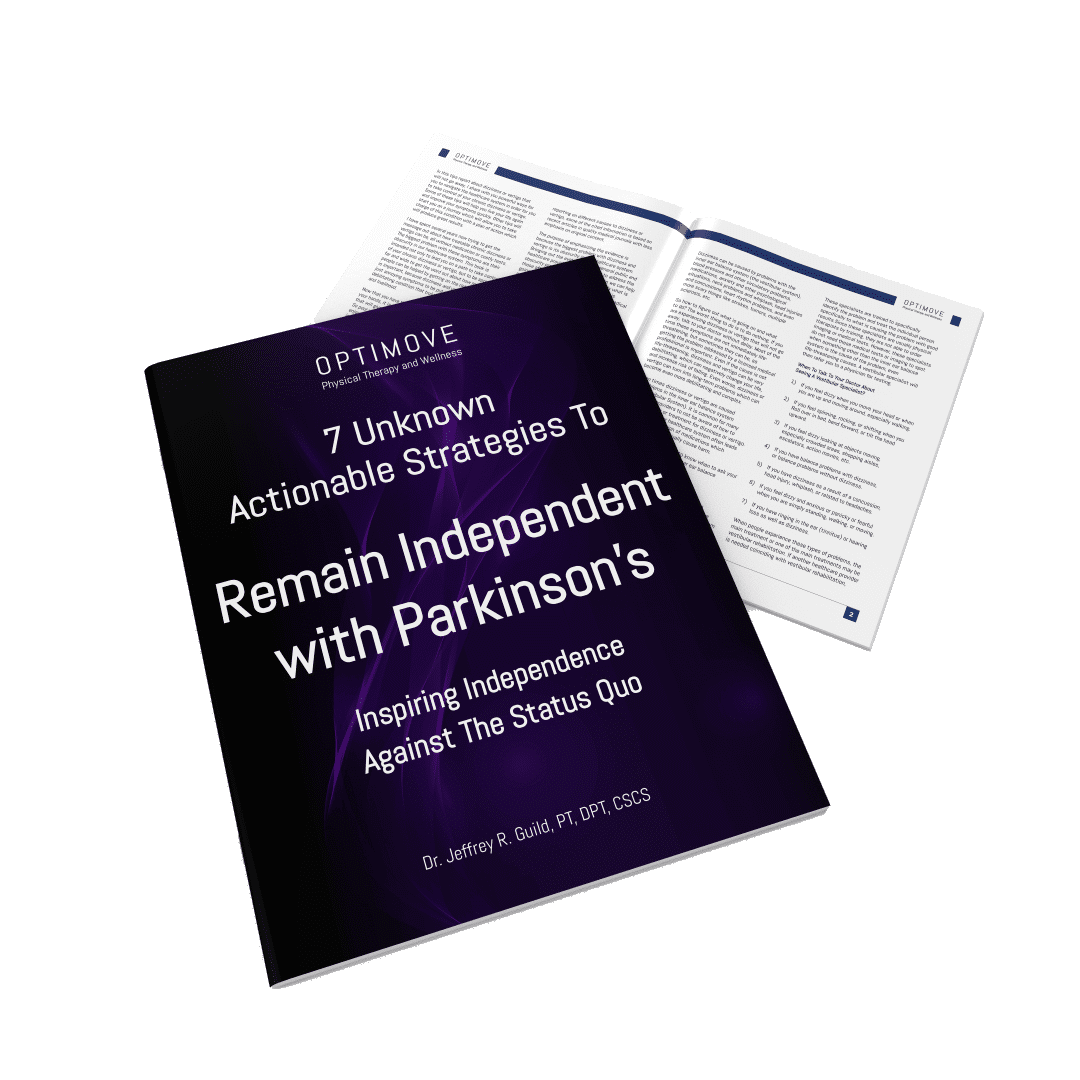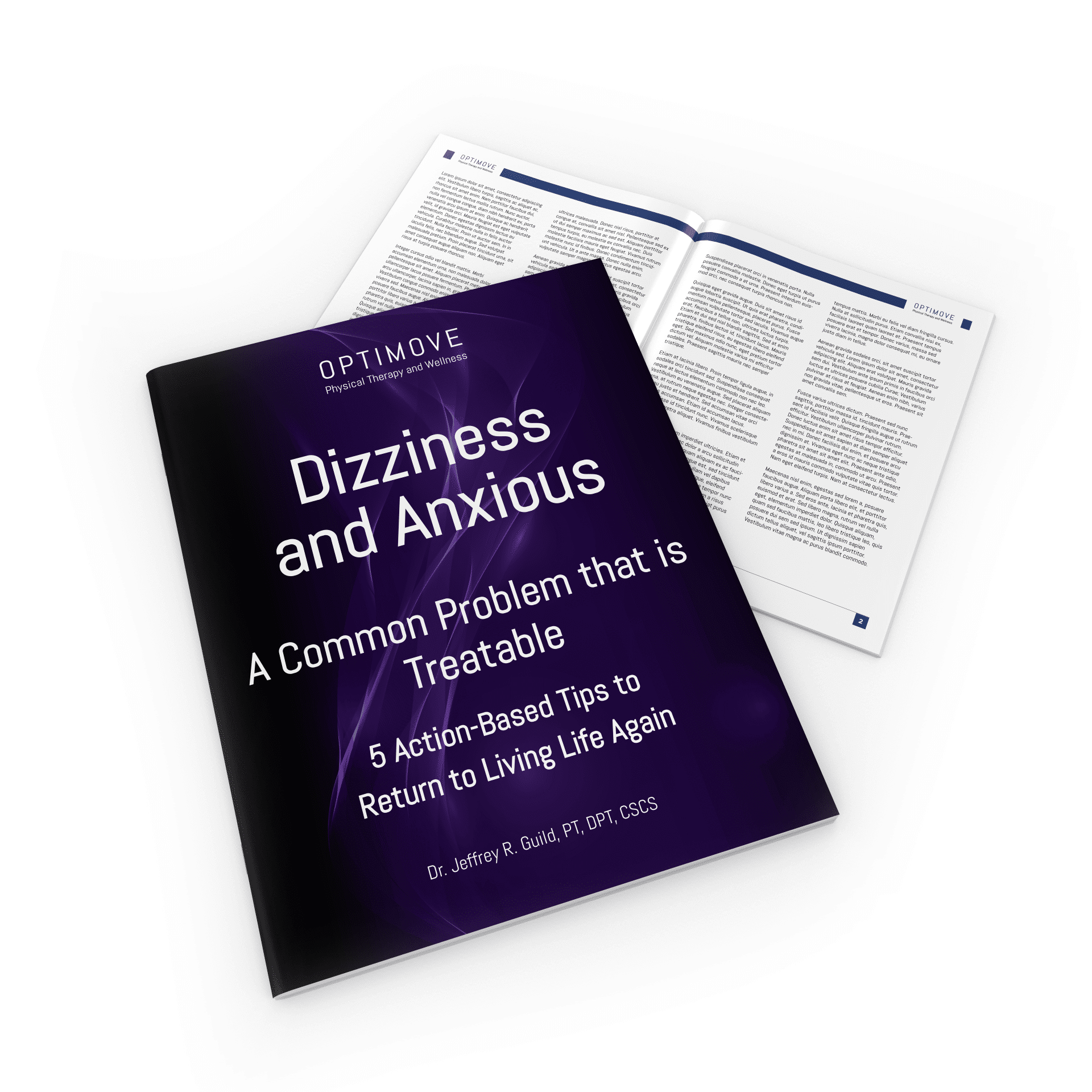Part 1 discussed how common it is for people to feel limited with their ability to get out with their friends and family like they want to. Maybe volunteer, visit friends, do recreational activities again. This unsteadiness, dizziness, the need to use a cane or walker can creep up so slowly, or maybe from a big event. For whatever reason, sometimes people just need help learning how to empower themselves to be independent again.
These next tips in this 2-part series will touch on areas rarely discussed and/or based on brand new research.
- Ask Your Doctor About A Vestibular Therapist If There Are Problems With Balance, Dizziness, or Vertigo.
- Dizziness is not a part of normal aging1 and age does not affect whether dizziness or vertigo can be treated.2
- Vestibular therapists are healthcare providers who specialize in working with the inner ear balance system. Vestibular rehabilitation uses exercises with the head, eyes, and body to stimulate the vestibular system (Inner ear balance system).3
- Sometimes it can be difficult to figure out what symptom is what,4,5 and a vestibular specialist can help figure that out.6
- Have Your Bone Health Checked
- The connection between how our balance system works and bone density is so strong that scientists are now saying people who have vestibular problems should automatically get their bone health checked and those who have bone health problems should be screened for vestibular (Inner ear balance) problems.7 There is a similar connection with vitamin D8,9 and overall bone health10 and vertigo.
- Don’t Ignore Walking Problems.
- Problems walking or abnormal walking is highly associated with falls.11
- If you have problems walking, get evaluated by a Physical Therapists. These are the professionals who can fix walking problems or recommend the correct walking device (Ex. Canes or walkers).
- Avoid Touching Furniture & Walls During Walking
- Avoid this behavior if at all possible. If touching furniture is absolutely necessary when walking, get evaluated by a Physical Therapist.
- This behavior makes people use their arms more and more for balance and they begin to use their legs less. This downward spiral makes people less stable.
There you have it. This is the most up-to-date information about how to maintain independence with age. Within this article will give you the power to act for your family, friends, and/or yourself to continue to live a life of independence and striving for optimal movement.
To Read More Powerful Solutions To Gain Independence With Age, Click Here For Our Free Tips Report
References
- Furman JM, Raz Y, Whitney SL. Geriatric vestibulopathy assessment and management. Curr Opin Otolaryngol Head Neck Surg. 2010;18(5):386-391.
2. Rossi-Izquierdo M, Gayoso-Diz P, Santos-Pérez S, Del-Río-Valeiras M, Faraldo-García A, Vaamonde-Sánchez-Andrade I, Lirola-Delgado A, Soto-Varela A. Short-term effectiveness of vestibular rehabilitation in elderly patients with postural instability: a randomized clinical trial. Eur Arch Otorhinolaryngol. 2017;274(6):2395-2403.
3.Kundakci B, Sultana A, Taylor AJ, Alshehri MA. The effectiveness of exercise-based vestibular rehabilitation in adult patients with chronic dizziness: A systematic review. F1000Res. 2018;7:276.
4. Batuecas-Caletrio A, Trinidad-Ruiz G, Zschaeck C, del Pozo de Dios JC, de Toro Gil L, Martin-Sanchez V, et al. Benign paroxysmal positional vertigo in the elderly. Gerontology. 2013;59(5):408-412.
5. Lawson J, Johnson I, Bamiou DE, Newton JL. Benign paroxysmal positional vertigo: clinical characteristics of dizzy patients referred to a Falls and Syncope Unit. QJ Med. 2005;98(5):357-364
6. Geser R, Straumann D. Referral and final diagnoses of patients assessed in an academic vertigo center. Frontiers in Neurology. 2012;3(169).
7. Singh NK, Jha RH, Gargeshwari A, Kumar P. Altered auditory and vestibular functioning in individuals with low bone mineral density: a systematic review. Eur Arch Otorhinolaryngol. 2018;275:1-10
8. Han W, Fan Z, Zhou M, Guo X, Yan W, Lu X, Chen C, Wu Y. Low 25-hydroxyvitamin D levels in postmenopausal female patients with benign paroxysmal positional vertigo. Acta Oto-Laryngologica. 2018;138:5,443-446
9. Jeong SH, Kim JS, Shin JW, Kim S, Lee H, Lee AY, Kim JM, Jo H, Song J, Ghim Y (2013) Decreased serum vitamin D in idiopathic benign paroxysmal positional vertigo. J Neurol. 2013;260(3):832–838.
10.Wu Y, Gu C, Han W, Lu X, Chen C, Fan Z. Reduction of bone mineral density in native Chinese female idiopathic benign paroxysmal positional vertigo patients. American Journal of Otolaryngology – Head and Neck Medicine and Surgery. 2018;39:31-33
11. Deandrea S, Lucenteforte E, Bravi F, Foschi R, La Vecchia C, Negri E. Risk factors for falls in community-dwelling older people: a systematic review and meta-analysis. Epidemiology. 2010;21(5):658-668


